Ancona, the capital of the Marche region and the most populous city, boasts 2,400 years of history and, thanks to its port, has always been a crucial hub for travellers and traders. Its countless historical and natural beauties and attractive sights testify to cultural and artistic richness of this Adriatic city.
But what are the unmissable places to experience Ancona like a local?

Ancona like a local
Ancona faces the Adriatic Sea and was founded by the Greeks in the 4th century B.C.
The Greeks left Sicily, sailed up the Adriatic Sea and arrived at the actual Riviera del Conero. They immediately noticed the uniqueness and beauty of this elbow-shaped territory and founded Ankon, which means elbow in Greek.
Since ancient times, the particular shape of this territory made it possible to build a natural port in the Gulf. Today, the port of Ancona is still one of the most important ports in the Adriatic and Italy.
Travellers often pass quickly through Ancona to embark for Croatia or to head for the beautiful beaches of the Conero, underestimating or not devoting the necessary time to this beautiful city, which has much to offer.
The city is protected by five hills that, together with the sea, make its views even more impressive. Walking through the streets of Ancona, you will encounter ancient monuments, jewels of art and architecture and well-kept green spaces.
This city also has a unique record: it is the only Italian city where you can admire sunrise and sunset over the sea.
Moreover, the area around Ancona have wonderful places and landscapes to see. These include the beautiful Monte Conero with its promenades and beautiful beaches, and the town of Recanati, located between the coast and the hinterland, and named the balcony town for its enchanting and endless panorama of the Marche hinterland.
Not to be overlooked, the excellent cuisine and the friendly hospitality of the region.
Ancona is easily reached by car from the main Italian cities of northern, central and southern Italy. The reference motorway is the A14 Bologna-Bari.
The nearest airport is Ancona-Falconara. Domestic and international flights operates from here. Ancona can also be reached by train from Milan and Rome.
If you arrive at Rome airport and want to spend a few days in the Capital, check the Visit Rome pass.
Let's see the 10 things to do in Ancona to enjoy the city like a true local.
10. Ancona as a local: a stroll through the historic centre
The people of Ancona love the city centre for strolling, shopping, having an aperitif or a coffee with friends.
In addition to entertainment, the centre of Ancona is rich in historical sites and squares.
A walk in the historic centre can start from Piazza Repubblica, a square located near the harbour, overlooked by important city monuments such as the Teatro delle Muse, the largest theatre in the Marche region, Palazzo Trionfi, and the Church of the Santissimo Sacramento.
A few minutes walk from Piazza della Repubblica is the oldest square: Piazza del Plebiscito.
Since the 15th century, this has been the main square. It is a square that is striking for its particular and scenic shape. It is rectangular and elongated and comprises several levels connected by stairways.
The people of Ancona call it Piazza del Papa - the Pope square - because in the middle of it stands the statue of Pope Clement XII. Clemente XII was a number-one figure for the city and the economic rebirth of its port.
There are also two other important buildings in this square: the government palace with its tower and the church of San Domenico, which houses finest paintings by illustrious painters such as Guercino and Titian.
Leaving Piazza del Plebiscito, a few steps ahead, you will find Piazza Roma, where the borders of the four historic quarters meet: San Pietro, Capodimonte, Cardeto and Santo Stefano.
This is the square of the Fountain of Horses. Historically, the indoor and outdoor markets take place here.
Near Piazza Roma, you will also find the famous Fontana del Calamo or Fontana delle Tredici cannelle, a Renaissance fountain with an ancient history.
The fountain was demolished in the early 1500s and then rebuilt. It consists of 13 spouts and 13 bronze masks, except for the one in the centre made of stone.
The masks represent satyrs and fauns and are surmounted by a knight on horseback with a sword, an icon of the city.
An ancient tradition says that he who drinks from the fountain of the 13 spouts will return to Ancona. The people of Ancona are also fond of this fountain because of this tradition.
Finally, continuing our stroll through the centre, we reach Piazza Cavour, the fourth most main square, with a statue dedicated to Camillo Benso di Cavour at its centre, surrounded by lush vegetation.
This square lies along the sea to sea promenade, from the harbour docks to the high coastline of Passetto, and is the junction point between the historic quarters and the twentieth-century districts.
9. The Old Port and the Arch of Trajan
Walking along the Vanvitelli promenade, we reach the so-called Old Port, where there is evidence of the ancient history of Ancona.
Here we can find a section of the city walls built in the second century BC., when the Roman fleet used the port of Ancona to patrol the Adriatic.
Walking around the ancient port, one can see interesting monuments such as the remains of the Lanterna Vanvitelliana, the Portella della Dogana, the ancient Palunci and Torriglioni gates, and first and foremost, the imposing Arch of Trajan, one of the symbols of the city.
The Arch of Trajan is one of the most important Roman remains in the Marche region and one of the best-preserved Roman monuments in Italy.
It was built in 115 A.D. by the architect Apollodorus of Damascus in honour of Emperor Trajan, who had ordered the expansion of the port of Ancona at his own expense.
Compared to other Roman arches in Italy, the Arch of Trajan has the particularity of being more slender and being located close to the sea.
Today, on either side of the arch, we can still see two busts, the partly eroded Tellus and the well-preserved Oceanus.
The two busts represent the land and the sea and underline another salient meaning of this monument: a point of connection between land and sea.
At the end of the city walls, we also find the Clementino arch, designed by the architect Vanvitelli in honour of Pope Clement XII.
The people of Ancona love to stroll along the old port in the late afternoon, especially in fine weather, to have an aperitif in a port bar and enjoy the colours of the sunset over the sea.
8. Visiting the Mole Vanvitelliana and the Museo Tattile Omero
Another symbol of the city to see, to experience Ancona as a local is the Mole Vanvitelliana or Lazzaretto di Ancona.
This pentagonal-shaped building, designed by architect Luigi Vanvitelli, is located inside the port of Ancona and was built in 1733 on an artificial island connected to the land by three bridges.
In the past, the Mole was used for various purposes: fortification to defend the port from enemy incursions and wave action, goods storage and public health hospital.
Today, the Mole Vanvitelliana is a place dedicated to culture and hosts exhibitions and cultural and musical events.
In addition, part of its spaces houses the Omero Tactile Museum, a real gem in Ancona.
This museum is one of the few tactile museums in the world. Its aim is to facilitate the integration of people with visual disabilities. In this space, accessible to all, people can learn about art through touch and seeing with the hands.
The museum was the brainchild of a blind couple, Aldo Grassini and Daniela Bottegoni, travellers and art lovers who, tired of the prohibition on touching found in all museums, imagined a museum where one could look by touching.
After years of meetings, in 1993, the City of Ancona, with the help of the Marche Region and the Italian Union of the Blind and Visually Impaired, established the Omero Museum, which has been housed in the Mole Vanvitelliana since 2012.
At the Omero Tactile Museum, one takes a tactile and visual journey from classical antiquity to modern times.
Here can be found over 200 works, including plaster and resin copies of classical masterpieces, architectural models and original contemporary sculptures.
Among the many masterpieces are St. Peter's Basilica and the Moses and David by Michelangelo.
The exhibition also includes sections dedicated to facial expressions and paintings.
The space dedicated to facial expressions explores the link between moods and facial expressions.
In the room of paintings, one can observe various famous paintings recreated in relief with different materials.
These sections, created especially for blind people, are a unique experience for sighted people.
Also inaugurated in 2021 is the Design collection, a multi-sensory space where 32 icons of Italian design, such as Vespa-Piaggio and the Bialetti moka coffee machine, can be observed and manipulated.
All the works are visible to the eyes and hands and have descriptions in Braille and black, in large letters.
There are also moving platforms with stairs for tactile observation of the taller works.
The Omero Tactile Museum is without doubt a must-see in Ancona!
7. Cardeto Park

Cardeto park - view
Cardeto Park is a green heart that occupies the entire upper part of the city. In this extensive park, you will find characteristic plants and flowers, historical sites and beautiful seascapes.
The park welcomes you with its rich and characteristic vegetation. The very name of this park derives from thistles, vegetables that were once typical of this area but are now rare in the park.
However, walking through the Cardeto, you will be surrounded by many beautiful flowers and colours that, especially in spring, decorate the ancient walls of the buildings. In addition, you may even see specimens of peregrine falcons and cormorants!
Within this park, you will also find areas rich in history: the Campo degli Ebrei, one of the largest and best-preserved Jewish cemeteries in Europe, and the Campo degli Inglesi, a cemetery area for people of the Protestant faith.
In the Campo degli Inglesi area, there is a beautiful century-old olive tree growing on the 16th-century walls of the Bastione di San Paolo, another historic site in the park, full of underground passages that were used by the population as an air-raid shelter during World War II.
At the highest and most panoramic point of the park, the top of Capuchin Hill, we also find the Capuchin Fortress and the old lighthouse of Ancona, from which there is a fantastic, open panorama of the entire coastline of Ancona, the port and the hystorical city centre.
On the other hill, on which the park stretches, the Cardeto hill, is Forte Cardeto and the Polveriera Castelfidardo, the largest gunpowder depot, built between 1864 and 1866, now housing an auditorium and exhibition centre.
A walk in this park is engaging and regenerating for body and soul.
6. The Passetto beach
The Passetto beach is the beach of Ancona residents.
This beach is located in the Adriatic district. It can be reached on foot in 20 minutes by walking to the end of Viale della Vittoria.
At the end of this avenue is a large monument dedicated to the fallen of the First World War, and from here, a large flight of steps descends to Passetto Beach.
This beach is located at the height of a pine forest overlooking the sea and is mostly rocky. The sea is clear, but the beach is rocky, so swimming can be complicated.
In the Passetto area there are bars and even a few bathing establishments. The particularity of this stretch of coast is the presence of several caves carved into the cliff and closed by coloured doors.
The caves of Passetto are boat warehouses that Ancona fishermen have built over the years and handed down from generation to generation.
From year to year, the caves have undergone changes and today are also equipped with electricity, water and gas and are often used as summer homes.
Continuing to walk along the shore towards the north, one comes to another picturesque place on the coast. It is a rock in the middle of the sea, whose shape is reminiscent of the Pope's seat.
The Passetto is an authentic place and is a must to experience Ancona like a local!
5. Taste stockfish all'anconitana
In any Italian city, an experience with food is a must, and the first thing an Anconitano (Ancona resident) will recommend is to taste stoccafisso all'anconitana!
Stoccafisso, a fish from the Baltic Sea, is the gastronomic symbol of Ancona and has been cooked and eaten for more than 500 years.
It is said that this fish arrived in Ancona thanks to Ancona merchants who sailed with their ships full of spices and textiles as far as the ports of northern Europe and imported large quantities of stockfish from there.
Stoccafisso all'anconitana is a second course based on stockfish cut into pieces and then cooked for a long time with potatoes, tomatoes, olives and typical Mediterranean herbs.
Today, stockfish can be cooked in many different ways, even though the original recipe is unique and has been handed down for generations by grandmothers and mothers.
To preserve this culinary tradition, in 1997 was founded the "Accademia dello stoccafisso all'anconitana". Every year, a cooking competition is held with many restaurants participating.
Ancona cuisine is very much linked to the sea. Another relevant ingredient of Ancona cuisine is mósciolo, the local name for mussels, which are easily caught here on the rocks.
Now, all you have to do is enter a trattoria and taste the typical dishes of Ancona, accompanied by the excellent wines of the Marche region!
4. Enjoy the nightlife in Piazza del Papa
Piazza del Plebiscito, commonly called Piazza del Papa, is the meeting place for Ancona residents.
This square is the place of the Movida, and cultural and musical events happen here, especially in summer.
Since 1800, the square has been a meeting place because the Mercato delle Erbe (Herb Market) was held here to sell fruit and vegetables.
Today in Piazza del Papa, we find many typical bars and restaurants fill up with young people, who gather here to have an aperitif with friends or chat outside with a glass of wine or a beer.
Enjoy an evening in Piazza del Papa, meet the “Anconetani”, and experience Ancona like a local!
3. Duomo di San Ciriaco
The Duomo di San Ciriaco is the religious symbol of Ancona and, like the Arco Di Traiano, is a landmark for travellers arriving from the sea.
This seafront cathedral is one of the most interesting medieval churches in the Marche region because it combines Romanesque style with Gothic and Byzantine elements.
The cathedral, built on top of the Guasco hill, has an ancient history and was built on the remains of a Hellenistic temple and an early Christian basilica.
Over the centuries, the church underwent several structural modifications and was rebuilt and enlarged.
Despite the damage caused by bombing during the two wars, it was restored and returned to the city in all its beauty.
The building, characterised by a central Greek cross plan, is topped by a twelve-sided arched roof covered with metal plates. This is considered one of the oldest and most perfect domes in Italy.
Inside the church, mosaic fragments from the remains of the pagan temple and early Christian basilica are still visible from a stained glass window on the floor.
You can walk to the Cathedral of San Ciriaco via long stairways from the city centre.
Along the way, you can also see other historical buildings such as the Palazzo del Senato, the Church of Saints Pellegrino and Teresa and Palazzo Ferretti, home to the Archaeological Museum.
Once you reach the Duomo, your effort will be repaid by the splendid view of the city and the port. The people of Ancona are fond of this place and love to come here in the late afternoon to admire a splendid sunset.
2. What to do around Ancona: visit Recanati
30 kilometres from Ancona, on a hill in the hinterland of the Marche region, is Recanati, the balcony town with stunning views.
From any point in Recanati, you will have a marvellous view. Valleys, hills, to the east the Adriatic Sea, to the northeast Monte Conero, and on the other sides of the town the peaks of the Apennines.
This town is rich in places of artistic and cultural interest. Giacomo Leopardi, a great poet of Italian literature, and Beniamino Gigli, a famous opera singer, were born here.
Walking along the town walls, you can admire ancient buildings and the sea view.
There are many places linked to the poems of Giacomo Leopardi: the house of Leopardi and the kitchen garden of the monastery of Santo Stefano, place that inspired the famous poem "l'Infinito". The square that inspired the poem "il sabato del villaggio" and the church of Sant'Agostino, whose bell tower inspired the poem "il passero solitario".
Also worth seeing are the Cathedral of San Flaviano, the civic museum of Villa Colloredo Mels with four masterpieces by Lorenzo Lotto, and the Museum of the Emigration of the Marche, which documents the migration of 700,000 Marche people.
The city also has places dedicated to Beniamino Gigli, one of the most famous opera singers of the 20th century.
Inside the Persiani Theatre is the Beniamino Gigli Museum, where you can see a faithful reconstruction of his dressing room, as well as objects, stage costumes, photographs and original documents of the tenor.
Check our article to discover the cultural attractions of Recanati.
Visit 3 major attractions in Recanati1. Visiting the Monte Conero natural park: trekking and beaches
About 10 km from Ancona, Monte Conero is undoubtedly one of the most fascinating stretches of coastline on the Adriatic.
This green promontory overhanging the sea became a nature park in 1987 and stretches across the cities of Ancona, Numana, Camerano and Sirolo.
The Monte Conero area will surprise you with its crystal-clear sea, beautiful beaches, caves, unspoilt nature, hiking trails and picturesque villages.
The Conero Riviera is a succession of bays and beaches of varying sizes, some accessible only by sea, others accessible via more or less steep paths, and still others a little larger, with parking facilities.
In Numana, lovers of sandy beaches and relaxation on the beach will find beautiful, golden, well-equipped beaches.
Those who prefer wilder beaches and hidden coves will choose Portonovo and Sirolo.
In the Sirolo area are some of the Conero most spectacular beaches, like the Due Sorelle beach and the Sassi Neri beach.
In addition to the sea and beaches, Monte Conero has nature and trekking trails in the woods, among pines, holm oaks, broom and typical Mediterranean scrub plants.
Within the Conero park, you have 18 well-marked paths of varying length and difficulty, which can be followed on foot, by mountain bike and horseback.
The colours of the sea, the white of the cliffs, the gold of the sand, and the green of the vegetation covering Mount Conero create a postcard landscape that is not to be missed!
Read our article to discover the resorts and tourist attractions of the Conero Riviera.
About the author
Written on 17/01/2024




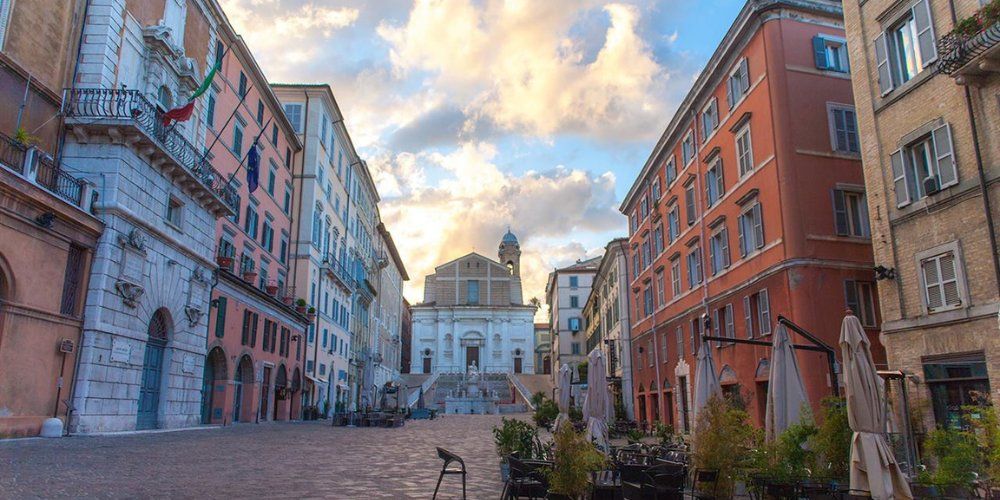
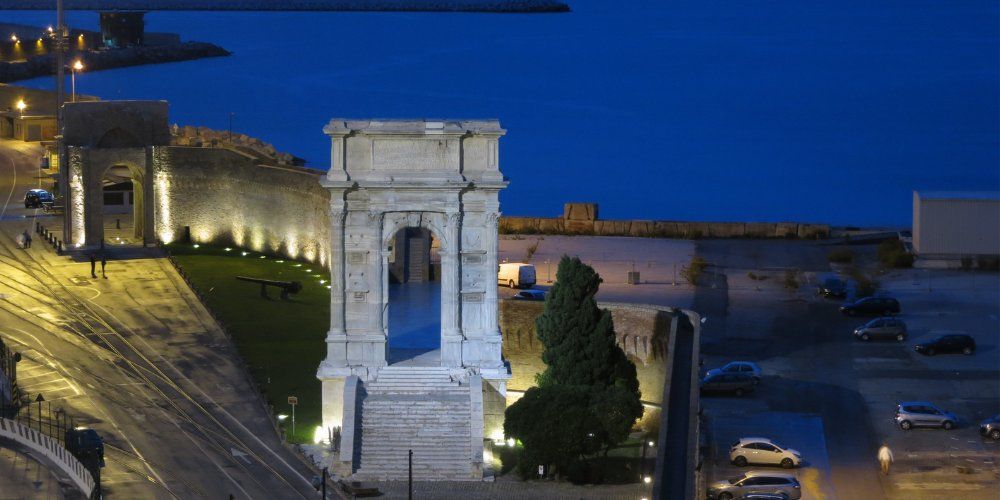
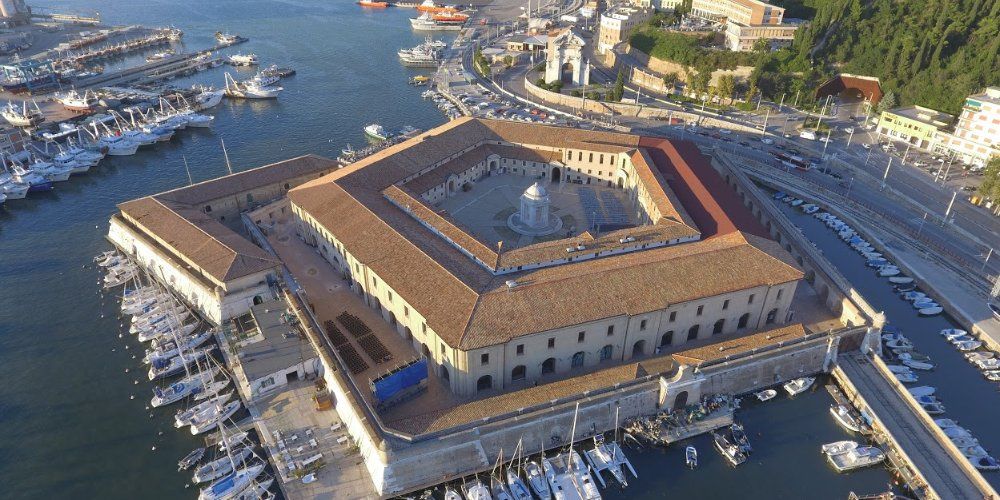
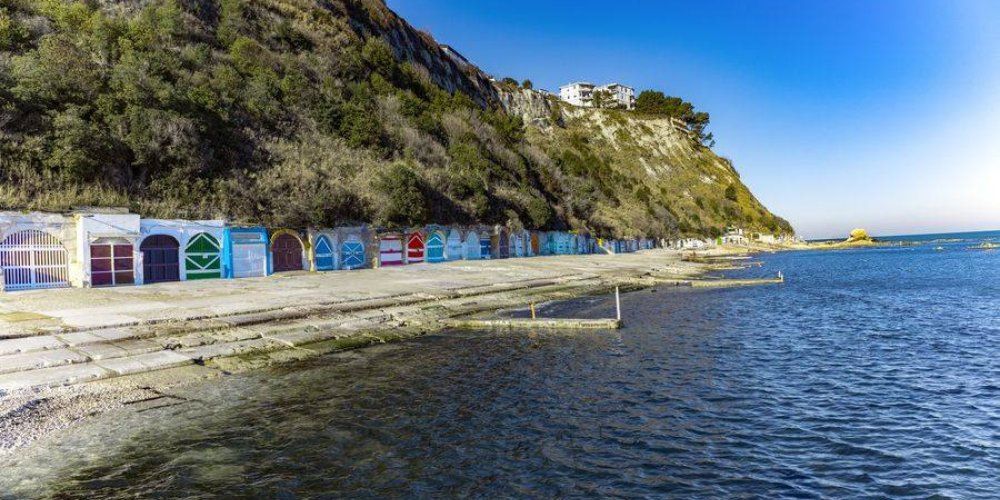
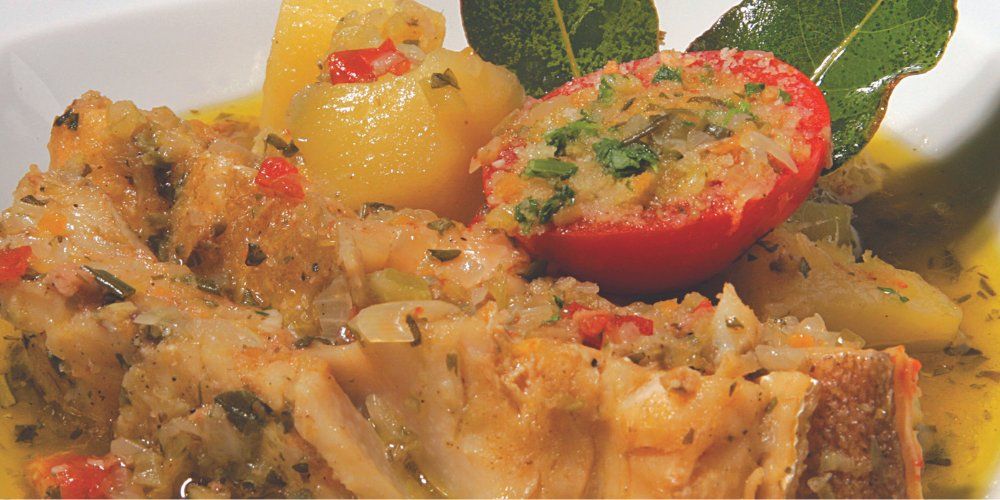
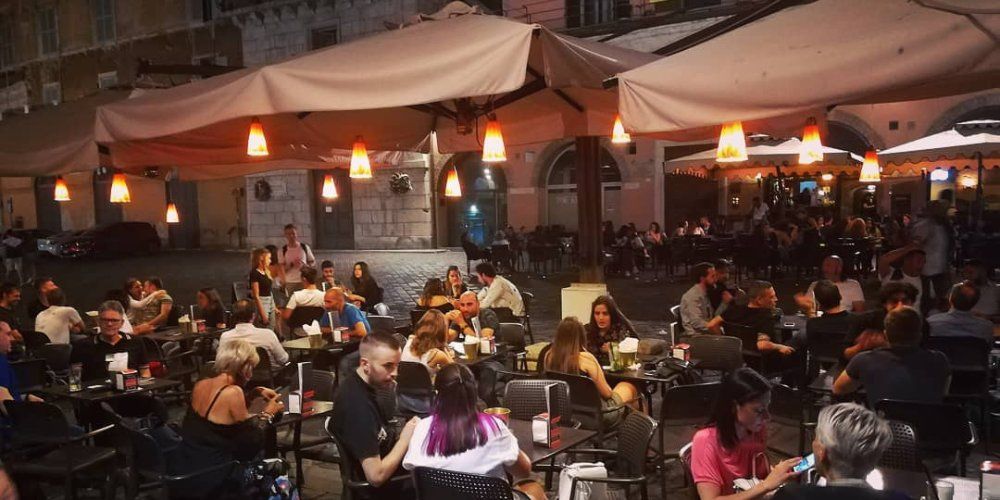
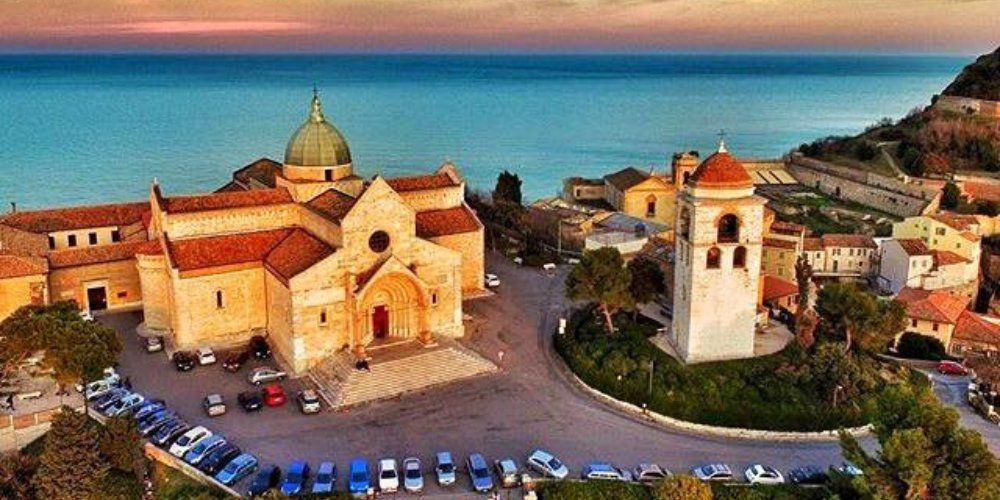
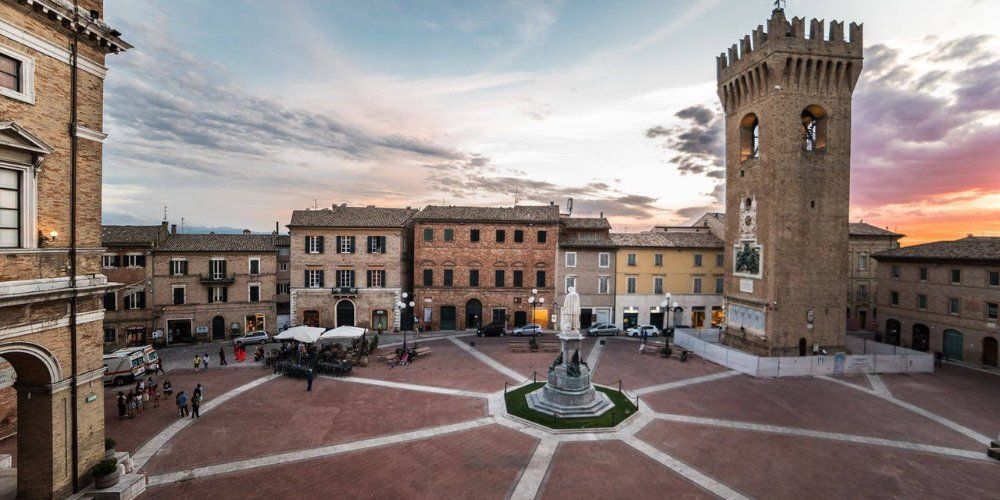
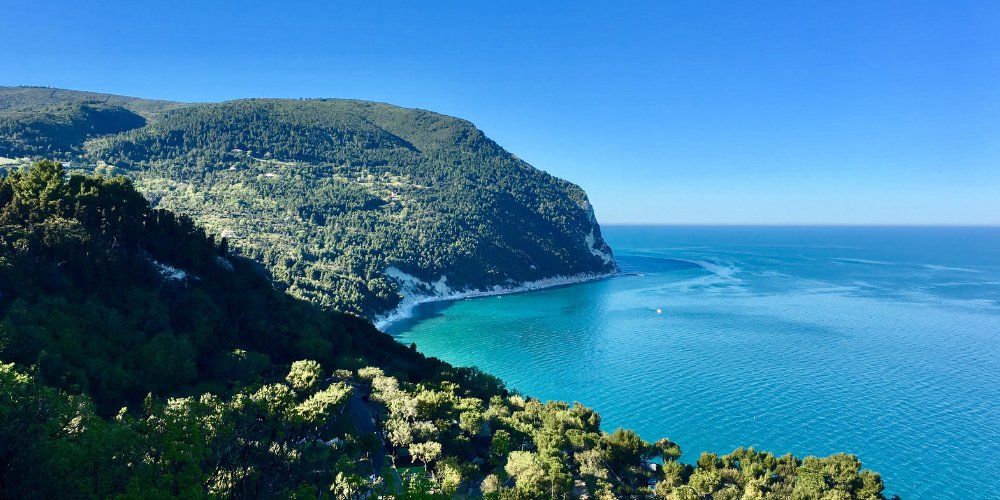
Ilaria Capatti
Want to visit Ancona in the most authentic way? Discover the 10 things to do and see to experience the city like a local!